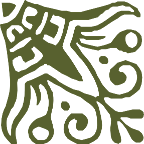

 Campus Martius
Campus MartiusContinuing with his persistent theme of blending reality with imaginative augmentation, Piranesi published his series “Campus Martius” in 1762. It is an in-depth reconstruction of the ancient Roman area of the same name, often translated as the ‘Field(s) of Mars,’ which includes many landmarks such as the Pantheon. Piranesi had already established his prowess at contemporary and historical depictions of the city.1 Nonetheless, Piranesi’s aggrandizement of Roman architecture and engineering is ever-present. He published the series as a standalone volume, separate from his earlier work “Le Antichità Romane.”
While similar to previous endeavors, the series stands out for its sheer scope. The most iconic element of the series is by far the Ichnographia, a large map composed of six pages illustrating the entirety of the Campus Martius as he envisioned it in ancient times. The Ichnographia includes many storied Roman buildings and structures, some historically accurate and others very speculative.
Some of these differentiations may be attributed to the lack of necessary specifications to accurately represent the area, despite Piranesi’s best efforts in scouring ancient texts and archaeological evidence. However, Piranesi also likely changed the city’s structure to match his design choices and aesthetic preferences.2 For example, he removed a variety of everyday places from the Campus and altered the direction of significant roadways, most notably the Via Lata, whose proper location was apparent at the time, to establish a geometric city structure.3
Regardless of its accuracy in representing Ancient Rome, the series remains a testament to Piranesi’s skill as an engraver and architect, the latter being his earliest trade. Only through complex surveying and record-keeping could such large-scale projects be possible then. Piranesi was initially hesitant to take up the project because of the dedication it demanded. Piranesi was sufficiently encouraged to develop the comprehensive study only at the urging of Scottish architect Robert Adam.4
While plates did not change significantly over time, Piranesi continued to experiment with their appearance through the use of a variety of unique inks. Altogether, Piranesi’s work can be analyzed as an experiment that inspires architectural thought and urban planning. He succeeded in creating a conceptual city independent of Rome, allowing physically impossible, or at least improbable, beauty to be shown.